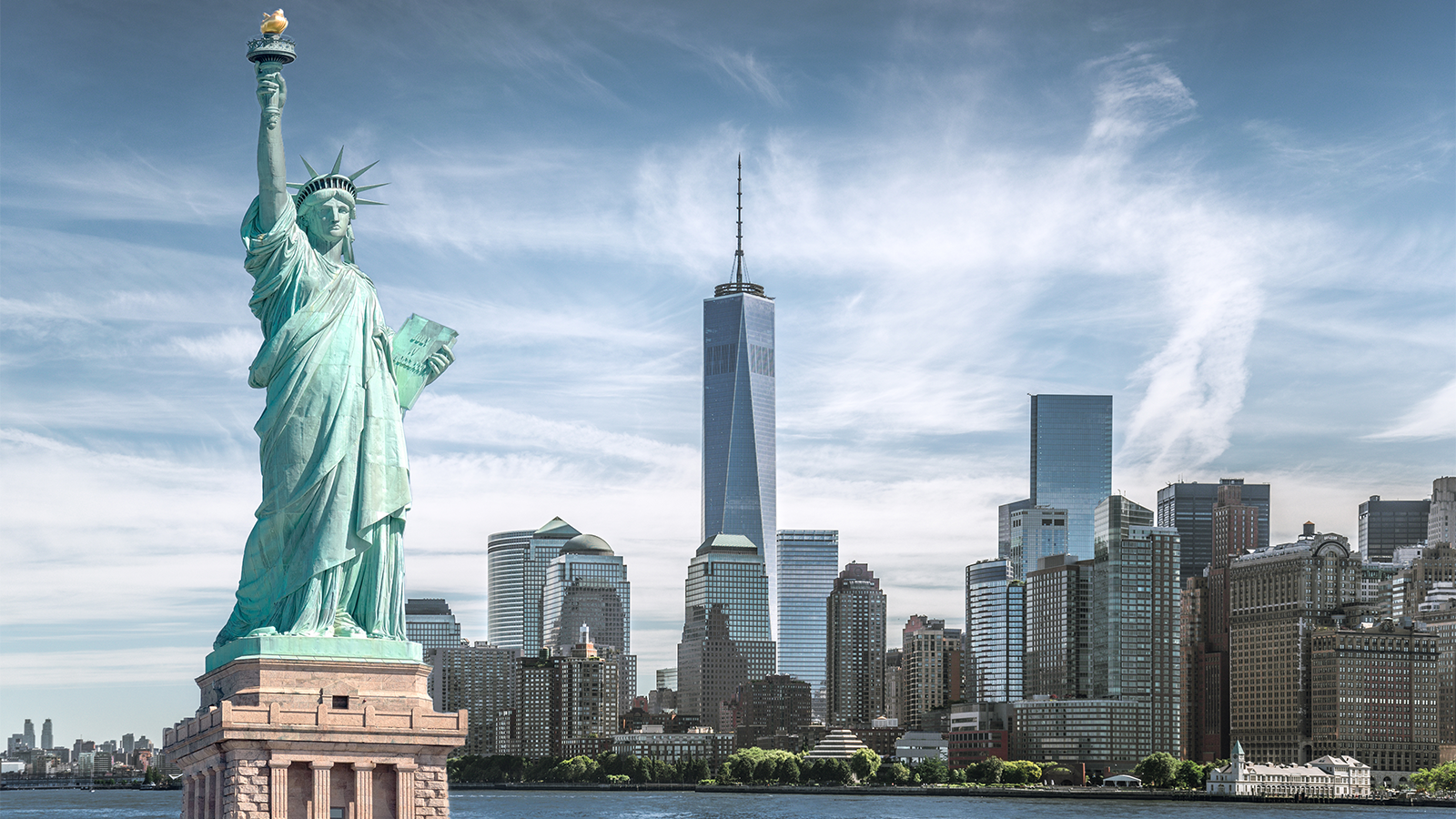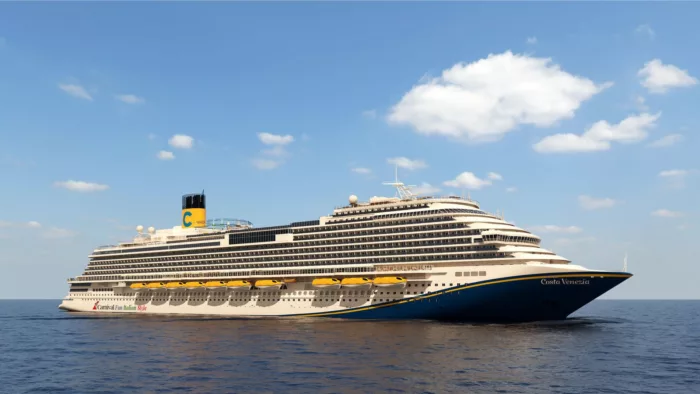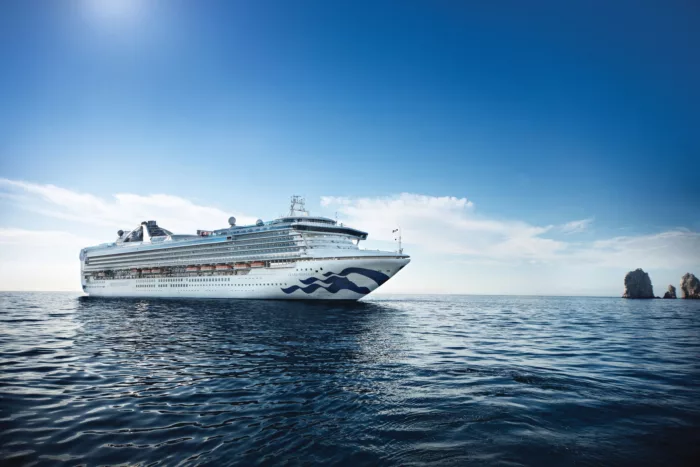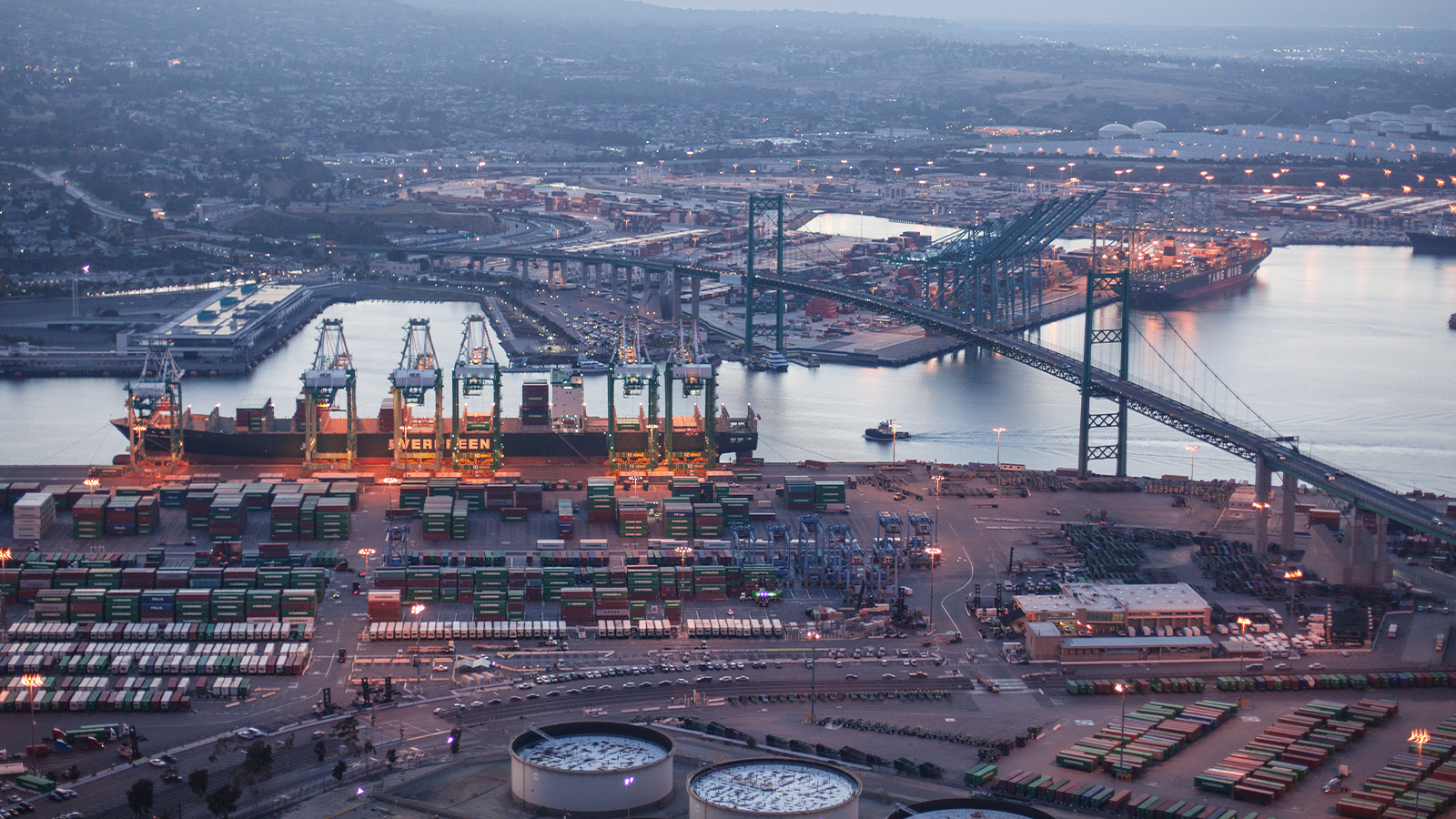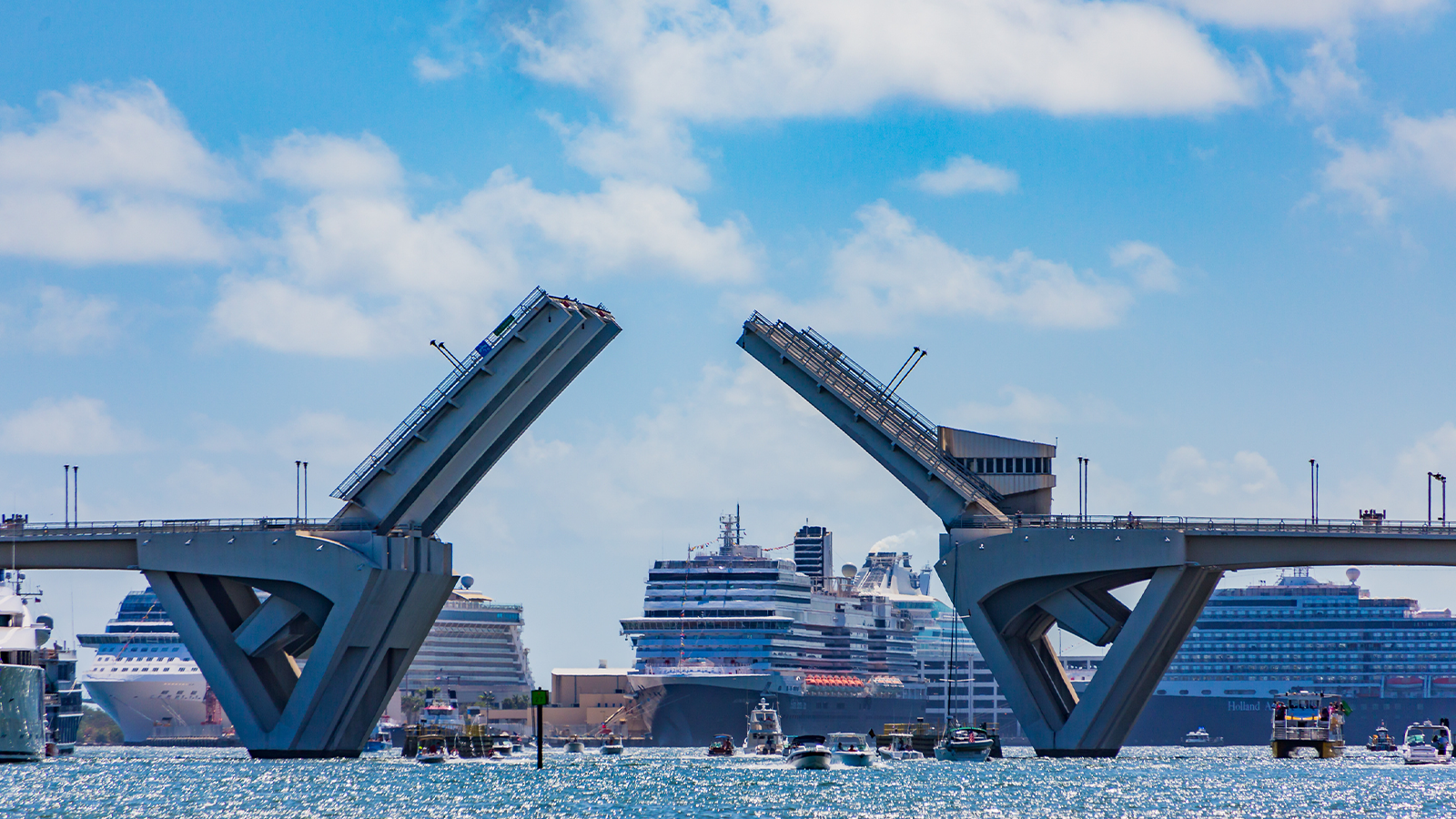
An expert cruise guide to the Caribbean
Thinking about a cruise to the sun-drenched Caribbean? Check out our guide to the islands
From prehistoric rock art sites to
state-run musical theatres, the
Greater Antilles is no Caribbean
cliché. Covering a staggering 90 per
cent of the West Indies, this quintet
of islands has given the world more
than most realise.
The Cayman Islands commercialised
scuba diving, Cuba invented salsa, Jamaica birthed
the Rastafari movement and the Dominican
Republic designed the first city grid system, while
Puerto Rico’s indigenous Taino created the barbecue.
Slowly but surely the Greater Antilles is
disentangling its Spanish, French, English and
American colonial histories and revisiting its African
and indigenous roots, which have shaped everything
from its soul-stirring music to its finger lickin’ cuisine.
THE CAYMAN ISLANDS
Protruding through Caribbean waters, this trio of underwater mountains was first spotted by
Christopher Columbus in 1503 when his ship blew off
course on his return from Panama in Central America.
Despite coming under British rule in 1670, the
Cayman Islands – named after the marine crocodiles
that once thrived here – remained largely uninhabited
until the 1700s.
But it wasn’t the first time a reptile
had inspired a moniker for the archipelago, as
Columbus christened the islands ‘Las Tortugas’
after the scores of sea turtles he discovered here. Turtling was a mainstay of the economy during the
17th and 18th centuries, replaced by shipbuilding until the start of the Second World War.
The Cayman
Islands’ national motto, ‘He hath founded it upon
the Seas’ is a clue to its storied seafaring past that’s
writ large across the country. Its Maritime Heritage
Trail ticks off no less than 36 archaeological sites
across the three islands of Grand Cayman, reef-ringed
Little Cayman and Brac. In the capital, George Town, on
Grand Cayman, you can see the ramps where mahogany
schooners were once launched, cut into rock.
Tethering the capital to Long Point on the island’s western coast is Seven Mile Beach, which is something of a misnomer since it’s only 6.3 miles (10km) long. Caymanian Joanna Boxall – who edits Explore Cayman – has made visiting it part of her Saturday morning ritual. “A stroll on Seven Mile Beach is a wonderful way to start the weekend. The sand is soft and gentle underfoot, there are no rocks, and you can walk and walk for miles.

"If you go early enough, the purple shadows from the casuarina and palm trees shade the beach in a charming and rather magical way, and you can sometimes spot juvenile turtles swimming in the shallows near Government House.”
The turtles aren’t the archipelago’s only charismatic underwater critters. You can also wade waist-deep in gin-clear waters with graceful southern stingrays in their natural environment at Stingray City. The best way to experience this offshore shallow sandbar is from a glass-bottomed boat on a 90-minute tour.
As the sun dips, make your way to Sunset House for sundowners with your toes buried in the sand. “It’s where all the locals go on a Friday evening. The curry is delicious,” says Joanna.
To get to know Grand Cayman’s wilder side, make a pilgrimage to the million-years-old Crystal Caves, which are concealed by an emerald green tropical forest. “They do a Dusk to Dark evening tour on Monday and Friday at 5.30pm,” Joanna adds.
“All the caves are lit up, so it’s really quite special. You can see wonderful stalactites and stalagmites as well as a few thousand fruit bats.”
GET ON BOARDNCL’s seven-night Caribbean: Great Stirrup Cay and Cozumel cruise aboard Norwegian Prima, return from Port Canaveral (Florida) via Great Stirrup Cay (Bahamas), Montego Bay (Jamaica), George Town (Grand Cayman) and Cozumel (Mexico), departs on December 7, 2025. Fares from £1,038.
Holland America Line’s 14-night Western
Caribbean Explorer/Tropical cruise aboard
Eurodam, return from Fort Lauderdale (Florida)
via Half Moon Cay (Bahamas), Cozumel (Mexico),
Belize City (Belize), Mahogany Bay (Honduras),
Ocho Rios (Jamaica) and George Town (Cayman
Islands), departs on December 8, 2024. Fares from
£2,109.

CUBA
This time-warped isle was controlled by Spain for
four centuries until its neighbour and longtime
adversary the USA briefly took control in 1898.
Cuba made its early fortunes from its fertile plains, cultivating the first tobacco crops in 1531 and enjoying a sugar boom at the turn of the 20th century. The 1800s marked the golden age
of Cuban cigars, during which the capital Havana became home to 1,300 cigar factories. Even today, Torcedores continue to hand-roll the ‘Champagne of Cigars’ in Pinar del Rio province’s Vinales Valley, which is cradled by boulder-like mountains.
The year 1959 marked another major moment
in Cuba’s eventful history, when the communist
revolutionary Fidel Castro toppled Fulgencio
Batista’s military dictatorship, establishing
a socialist state that holds to this day.
Cuba’s delightfully dishevelled capital remains
a communist time capsule. Billboards bear
revolutionary slogans, while convertibles in
Barbie pink and lime cruise its 6.5km sea-spritzed
Malecon (esplanade). Save a classic car tour for
dusk, when silhouetted fishermen cast their
lines and rag-tag musicians serenade passers by.
Primed for unscripted exploration, the
charmingly crooked streets of Havana’s 500-
year-old historic quarter, La Habana Vieja, are
atmospheric at any time of the day. Spilling out
across the cobbles are the sounds of Afro-Cuban
jazz, Mambo and Cuban son, which Buena Vista
Social Club put on the world music map.
The favourite musical haunt of Sue Herrod – a
British composer-songwriter who has called Havana
home for 25 years – is in the city’s acclaimed fine
art museum. “The place I most love to hear live music
is in the intimate [state-run] 300-seater theatre
tucked away inside the 18th-century building of Museo de Bellas Artes,” she says. “In this gem of a place I’ve heard top Cuban
jazz-classical pianist Ernan Lopez-Nussa and the
brilliant, unique voice of the Canadian composer-
singer-songwriter Rufus Wainwright.”
Leaving central Havana’s crumbling façades
behind, graze on vegan-friendly fare in one of Old Havana’s “not-so-curated neighbourhoods,”
says Sue. “In Jibaro restaurant you can enjoy
dishes that are traditional to the island but with
a twist – such as tostones, or twice-fried green
plantain – and I recommend their ratatouille
and ropa vieja, which is shredded beef or pork
in a lightly spiced tomato sauce.”
The restaurant also serves up some inspired cocktails. “My go-to drink predates mojitos or daiquiris and is reckoned to be Cuba’s oldest cocktail,” says Sue. “It’s a delicious mix of aguardiente, lime and honey called canchanchara, but made here, Jibaro-style, with quality Santiago eight-year-old rum.”
GET ON BOARD
Ambassador Cruise Line’s 45-night Cuba
and Treasures of the West Indies cruise aboard
Ambition, return from London Tilbury via Praia da Vitoria (Azores), Ponta Delgada
(Azores), St John’s (Antigua), Basseterre (St Kitts), Havana (Cuba), Santiago de Cuba
(Cuba), Ocho Rios (Jamaica), Willemstad
(Curacao), Scarborough (Tobago), St George’s (Grenada), Bridgetown (Barbados), Funchal
(Madeira), Lisbon and Porto (Portugal),
departs on January 9, 2025. From £2,929.

JAMAICA
The Caribbean’s third largest island was settled in the early 16th century by gold-seeking Spaniards,
who went on to rule for a century and a half before ceding power to Britain in 1670. Jamaica
has survived countless natural disasters over the
years, including the great fire of 1704 which gutted
its Port Royal City, and a devastating earthquake
that tore through the capital, Kingston, in 1907.
Make downtown Kingston’s mural-plastered
Water Lane – a modern tribute to the country’s
rich musical heritage – your first stop. And don’t miss a pilgrimage to the childhood home and
recording studio of Jamaica’s first son – the reggae
legend Bob Marley. Now a museum, it’s just a
20-minute taxi ride east.
For lunch on the go, tuck into Jamaica’s most
famous street food: jerk chicken, cooked slowly
over indigenous pimento wood. Another locals’
favourite, ‘rundown’, is an earthy mackerel stew
simmered in a savoury coconut milk sauce, which
can also be made into a vegan ‘ital’ (food eaten by Rastafarians) version with butternut squash.
Escape the early afternoon heat in the island’s
cooler rainforest-cloaked interior. Luminous
lagoons and cascading waterfalls such as the 55m-high Dunn’s River Falls – of Dr No film fame –
make this as much of a magnet for aquaphiles as Jamaica’s 1,022km-long coast.
One of the island’s more serene activities
involves floating down the jade-green Martha
Brae River on a nine-metre bamboo raft, similar
to those used to convey sugar to port during
Jamaica’s prosperous plantation era.
The river’s
course snakes past trees swollen with mangoes,
while artisan shops sell homespun souvenirs
straight from the banks. And keep your eyes
peeled for tailed deer, peacocks and otters.
Close out your day with a soft adventure in
eastern Jamaica’s mist-veiled Blue Mountains,
where some of the world’s most prized coffee
beans grow at a head-spinning 1,800m. Hiking,
driving and biking plantation tours call in at
historic estates where you can enjoy a cup of
single-origin handpicked coffee, paired with
views that stretch all the way to Cuba.
GET ON BOARD
MSC Cruises’ 14-night Caribbean cruise aboard
MSC Seascape, return from Miami (Florida)
via Puerto Plata (Dominican Republic), San Juan (Puerto Rico), Ocean Cay MSC Marine
Reserve (Bahamas), Miami (Florida), Ochos
Rios (Jamaica), George Town (Cayman Islands)
and Cozumel (Mexico), departs on February 15, 2025, from £1,419.
Celebrity Cruises’seven-night Grand Cayman,
Jamaica and Labadee cruise aboard Celebrity
Equinox, return from Port Canaveral (Florida)
via George Town (Grand Cayman), Falmouth
(Jamaica) and Labadee (Haiti), departs on February 22, 2025, from £519.

DOMINICAN REPUBLIC
The Dominican Republic covers the eastern two thirds of Hispaniola: a Caribbean island of
many superlatives, including the first paved road
in the Americas and the Western hemisphere’s
oldest standing cathedral. In 1492, the Dominican
Republic became the first Spanish colony in the
New World; the French colonised neighbouring
Haiti 130 years later.
Laid out in a checkerboard pattern that became
the blueprint for town planners across the
Americas, the Unesco-crowned colonial zone of Santo Domingo – the Dominican Republic’s
capital – feels like a living museum. Ruth Pion’s
Hidden History – A Decolonial Tour is designed to scratch beneath the surface of the city’s
restored Baroque architecture and give a voice to the island’s indigenous peoples and Afro-
Dominicans.
A social researcher and the founder
of educational project AfrohistoriaRD, Ruth says: “The second stop of the 90-minute walking tour
is one of the most impactful. The 16th century
gate of the Royal Shipyards was built by enslaved
Africans, who were auctioned at La Negreta.”
Its
foundations are in the colonial zone’s seldom-
visited black neighbourhood of Santa Barbara.
Another poignant sight is Plaza Colon’s bronze of
Christopher Columbus “who appears powerful,
gazing towards the horizon”.
A statue that says a thousand words, Taino Indian heroine Anacaona
rests below him on the monument’s pedestal
base. “She’s a wonderful woman in history that we should look up to more, but most people don’t
even know who she is,” Ruth adds.
Take refuge from the broiling midday sun in the colonial zone’s Larimar Museum. Here, visitors can splurge on glittering jewellery fashioned from the brilliant blue Larimar gemstone that’s hand- mined from a single peak in the country’s Baoruco mountain range.
Satisfyingly, you don’t need to leave Santo Domingo’s limits to get your nature fix. After lunching on specialities like slow-cooked ‘seven meat’ sancocho stew or pollo guisado – braised chicken served with native vegetables such as auyama and malanga – head for the city’s beloved botanical gardens, a 20-minute taxi ride from Zona Colonial. `
An open-air sightseeing buggy is the best way to explore its sprawling 202 hectares, which are threaded by ornamental brick paths and freckled with more than 100 species of native orchid.
You can uncover more of the city’s natural wonders at Three Eyes National Park, which is thought to be a sacred ceremonial site once used by the country’s indigenous people. Discovered in 1916, this subterranean limestone cave system boasts a trio of turquoise lakes that the Taino refer to as eyes.
Mark your return to daylight with a sunset stroll along Santo Domingo’s popular seaside
promenade, which runs roughly half the length of the city. If your itinerary allows, spend an
evening being seduced by the lyrical rhythms of
bachata at venues such as Lucia 203 or Jet Set
Club. A genre of music fusing Cuban son and
bolero with the country’s national dance,
merengue, it was born in the Dominican Republic’s
rural backwaters in the early 20th century.
GET ON BOARD
Windstar Cruises’ six-night The Spanish Main:
Rise of the New World cruise aboard Star Pride, from San Juan (Puerto Rico) to Colon (Panama)
via Santo Domingo (Dominican Republic),
Cartagena (Colombia) and San Blas Islands
(Panama), departs on December 7, 2025, from
£2,252.
TUI’s seven-night Colours of the Caribbean
cruise aboard Marella Explorer 2, return from La Romana (Dominican Republic) via Samana
(Dominican Republic), Road Town (British Virgin
Islands), Philipsburg (St Maarten), St John’s
(Antigua) and Roseau (Dominica), departs on February 25, 2025. Fares from £1,781 including return
flight from Birmingham.

PUERTO RICO
Formerly known as Boriquen, Puerto Rico was the
first port of call for Spanish ships arriving in the
Americas. One of the world’s oldest colonies, the archipelago owes its name – which translates
as rich port – to the literal rivers of gold the
Spaniards discovered here in 1508.
Those precious
nuggets were fashioned into elaborate jewellery
by Puerto Rico’s original hunter-gatherers, who
were later enslaved and forced to pan for gold by
the conquistadores. After failed conquests by the
English, Dutch and French, the island eventually
became a US territory following the Spanish-
American War in 1898.
However, there are plenty of ways to connect with the island’s indigenous past, from kayaking along the petroglyph-studded Tanama River to eating at family-run chinchorros – rustic roadside kiosks – in Loiza on the east coast, near the capital of San Juan.
A two-hour scenic taxi ride into the central
highlands delivers you to Utuado: one of a
handful of Puerto Rican towns that has kept its native name. Spend a morning soaking in
the serenity of Utuado’s Caguana Indigenous
Ceremonial Park, which turns the clock back
800 years.
Visitors stroll through a series of sun-
dappled plazas known as bateyes – ceremonial ball
courts used by the Taino – under crowns of sacred
ceiba trees from which canoes were once carved.

There’s also an onsite botanical garden growing medicinal plants the Taino used, a pocket-sized museum displaying ancient artefacts, and 20 pre-Columbian petroglyphs etched with birds, human faces and divine figures.
Continue your exploration of the great
outdoors in Puerto Rico’s northern karst region,
recommended by Gabriel Lugo of Wildside Nature
Tours as the best spot for bird-watching. “It hosts
a rich variety of endemic and Caribbean species
of birds in diverse habitats,” he says. “One good
example of karst habitat is the Cambalache State
Forest in the municipality of Arecibo.”
Biking and hiking trails snake through this
405-hectare swathe of jungle, punctuated with
limestone pinnacles that reach 50m into the sky.
“My favourite endemic bird is the Puerto Rican
lizard cuckoo,” adds Gabriel.
“These large birds
[nicknamed Big Ape Bird after their distinctive
monkey-like ‘ka-ka-ka-ka’] call move along the
branches quickly but with a precision that helps them catch their number one prey: lizards.”
GET ON BOARD
Silversea’s nine-night Fort Lauderdale (Florida)
to Fort Lauderdale return cruise aboard Silver
Moon, via San Juan (Puerto Rico), Gustavia (St Barthelemy), St John’s (Antigua), Basseterre
(St Kitts and Nevis) and St Thomas (US Virgin
Islands), departs on February 17, 2025. Fares from
£5,600 including flights.
Royal Caribbean International’s seven-night Southern Caribbean cruise aboard Rhapsody of the Seas, return from San Juan (Puerto Rico) via St Croix (US Virgin Islands), Charlotte Amalie (St Thomas), Philipsburg (St Maarten), Fort de France (Martinique) and Bridgetown (Barbados). Departs on March 23, 2025. Fares from £609.













